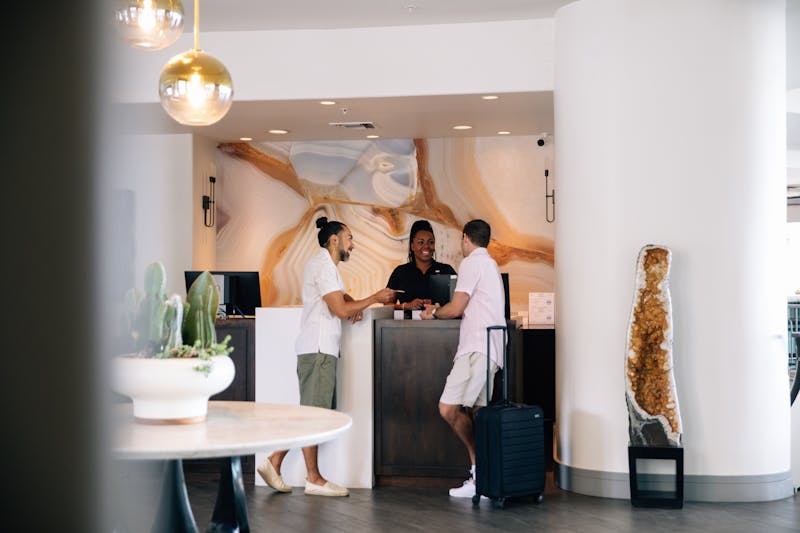It’s an influencer’s world and we’re just living in it—or so it seems. In the social media industry, the buzz of influencer marketing is a loud one. Whether it’s a body positive (#BoPo) blogger sharing her latest words of wisdom on beach bodies or a travel photographer posting photos of his Lisbon adventure, there’s no denying that social media influencers are everywhere. But how does a brand secure a partnership with an influencer? How does it benefit their audience? And, most importantly, how do they afford it? All questions can be answered with one explanation: micro-influencers.
What is a Micro-Influencer?
Split the difference between a famous food blogger and your friend who loves to cook and you’ll arrive at a micro-influencer. It’s exactly what its name implies: someone with a smaller following than a standard, or “macro,” influencer. The exact number is debatable—social media strategists theorize that a micro-influencer’s audience can be anywhere between 2,000 and 40,000 followers, but it’s ever-changing. Because of their smaller following, many consider micro-influencers just everyday people who’ve garnered a small social media following. Micro-influencers also typically have a niche area of expertise, ranging from DIY bloggers to local food guides.
Why Should You Partner with a Micro-Influencer?
The benefits of using a micro-influencer are numerous both for your brand and your budget.
They’re a Trustworthy Voice: The audience that followers micro-influencers, while smaller, is more loyal. Why? Because people trust advice and opinions from people they know. In Nielsen’s 2015 Global Trust in Advertising Study, research found that 83% of consumers trust opinions from friends and family the most, while a data report from Stackla found that 86 percent of consumers say authenticity is important when deciding what brands they like and support. This is why micro-influencers are successful—many consider them to be the relatable voice of a friend, sharing authentic content, reviews, and product recommendations. Because many micro-influencers are considered “Average Joes,” an audience can easily relate to them and therefore believe in what they promote, as opposed to an influencer with 330k followers.
They Have Better Engagement: When it comes to engagement, bigger doesn’t mean better. In fact, after a certain point, engagement plateaus and then drops with the more followers an influencer has. In a study of over 800,000 accounts, Markerly found that those with less than 1,000 followers generally received likes on their posts 8% of the time. Users with 10 million+ followers only received likes 1.6% of the time. It’s best to hit that sweet spot; collaborate with users who’ve amassed a small but powerful following and you’ll find their engagement pays off the most.
They’re Niche: Another reason micro-influencers are powerful is that they create niche content that appeals to a smaller target market, i.e. Chicago food bloggers or a budget-friendly travel blog. Good news for you—this means you can find influencers who appeal directly to markets you want to seek out and engage.
They Give You a Competitive Edge: Think everyone is partnering with micro-influencers? Think again. They’re still a relatively unknown resource and an underutilized tool in social media marketing; odds are, your competition isn’t using them. You’ll have the competitive edge if you take advantage of their influence.
They’re Cost-Effective: Don’t have $10,000 to shell out to a big-name influencer? You’re not alone. Micro-influencers are more budget-friendly than some of their more popular counterparts, and with their optimal engagement, your ROI will be a lot stronger. Even if you do have the budget to spend on a big influencer, you could spend the same amount of money on four micro-influencers and effectively quadruple your reach.
Availability: Bigger influencers have hundreds of brands reaching out to them, so they can be pickier about with whom they collaborate. You could reach out to them about a partnership and end up never hearing back. If you choose to partner with a micro-influencer, not only are there hundreds to choose from, but you’ll also have less competition getting in the way of them choosing your brand.
How to Use a Micro-Influencer
Before partnering with a micro-influencer, you first need to find one suitable to your brand. And, with so many out there, it can be difficult to find what you’re looking for. Start by perusing your own followers to see if any influencers are already following you. Another way to seek out micro-influencers is through influencer websites (such as Fohr) and online research tools (like GroupHigh), although some might require a fee. You can also connect with them at industry and networking events. If all else fails, searching them through social media is always a good option. Once you’ve found a few you’d like to work with, make sure they’ll be a good fit for your brand. Check out their content, who they’ve worked with before, and who their audience is.
A common characteristic between micro-influencers is that they’re conscious of who they work with—they’re proud of their reputation and want to make sure their audience enjoys the brands they promote. Because of this, you’ll want to extend a personal connection with them. Don’t send a mass email or generic message asking to partner with them. Send a thoughtful email explaining 1) what you like about their content, blog, brand voice, etc. and 2) why this partnership will benefit them and their audience.
With a partnership secured, you can explore several ways to collaborate with a micro-influencer, depending on what your goals, budget, and industry are. Here are a few suggestions:
- Social Media Takeover: Have the influencer take over the ‘gram! This option leverages both your and the influencer’s audience. You’ll have their audience popping over from their social platforms to yours and your audience exploring theirs. Win-win.
- Gifting a staycation/meal: Depending on your budget and their follower count, gifting a micro-influencer an overnight stay or a complimentary meal is a great idea. They’ll have the opportunity to truly experience your products/services and share an authentic review with their audience.
- Inviting them to an event: Do you have a special event coming up? Gifting a micro-influencer complimentary or discounted tickets to an important talk, holiday party, or industry event is a cost-effective way to have them experience an exciting part of your brand.
The Brass Tacks
Influencer marketing should be an accessible and attainable form of advertising. Replace big name influencers with budget-friendly micro-influencers. It’s likely you’ll not only increase brand recognition but also see higher conversions, leading to a better return on investment.


